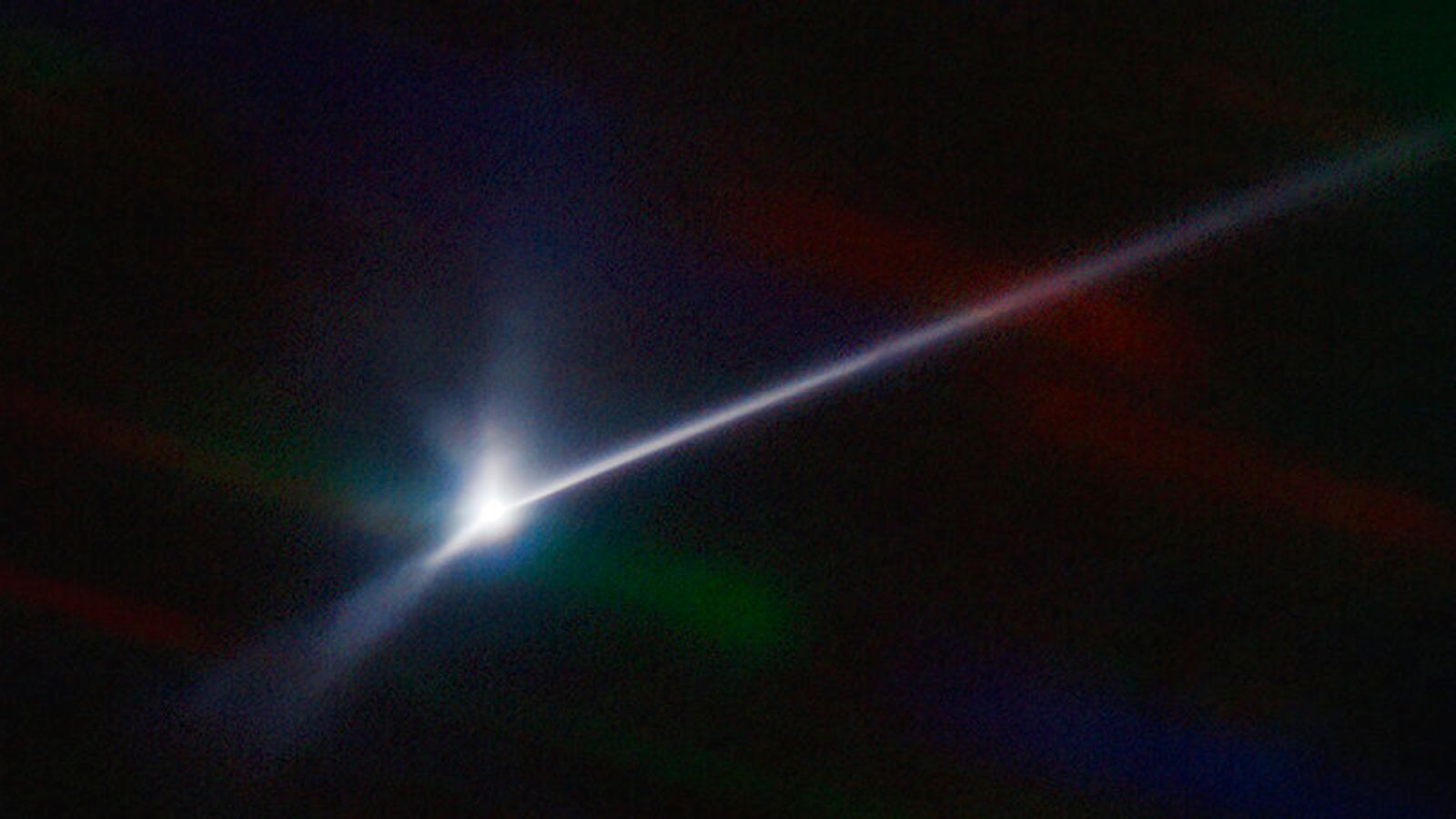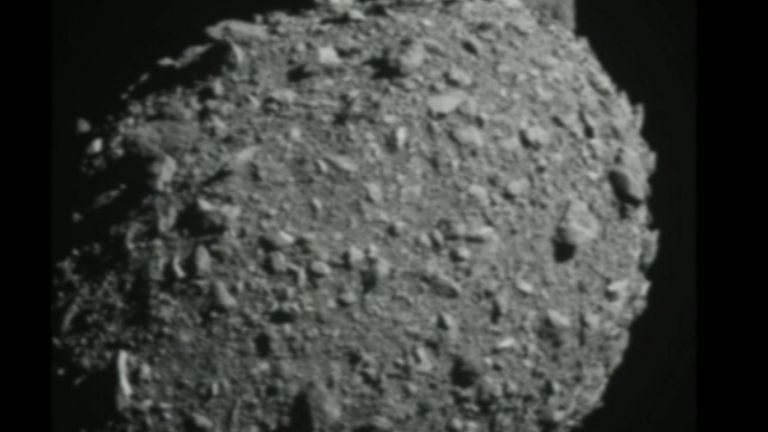More than 6,000 miles of debris is trailing behind an asteroid that was deliberately hit by a NASA spacecraft.
The image was captured by a telescope in Chile two days after last month’s Double Asteroid Redirection Test (DART).
It shows a tail made up of dust and other material from the impact by the spacecraft – which was about the size of a vending machine and weighed half a tonne before the 15,000mph collision.
The tail is accelerating away from the asteroid, mainly due to pressure from solar radiation, said Matthew Knight from the US Naval Research Laboratory.
Mr Knight and the Lowell Observatory’s Teddy Kareta made the observation using the Southern Astrophysical Research Telescope.
Experts believe the tail will get even longer and more dispersed, and at some point become undetectable from any other space dust.
The DART mission aimed to see if an asteroid’s orbit could be altered and was intended as a dress rehearsal should such an object ever threaten Earth.
However, the 160-metre asteroid targeted, Dimorphos, was seven million miles from Earth and never a threat itself.
The effect on the asteroid is expected to be tiny – checking its speed by just 0.4mm per second.
But over time it should have a measurable effect on its orbit.
An array of land and space-based telescopes including NASA and ESA’s new James Webb Space Telescope, will all study the asteroid to measure the outcome of the test.

